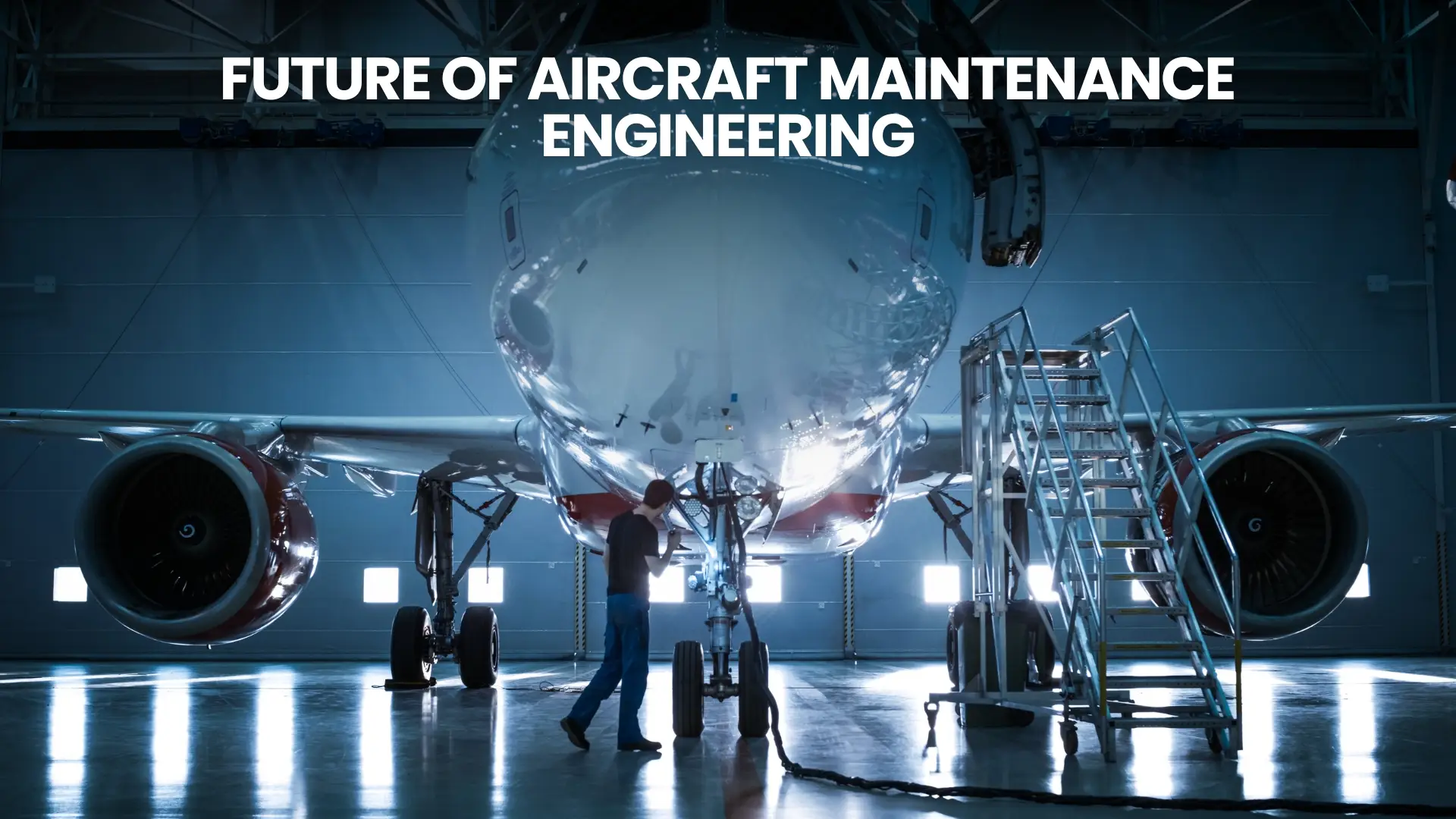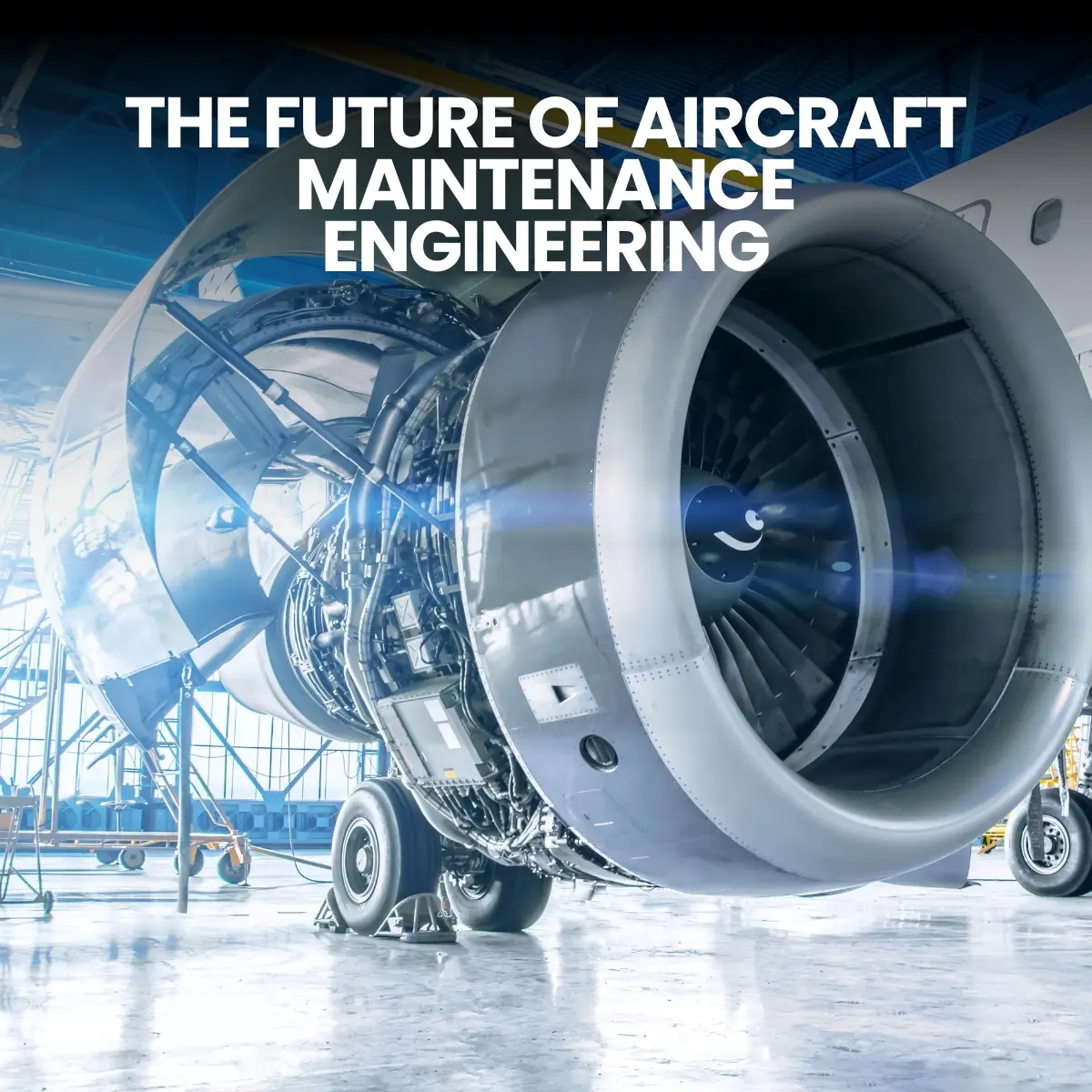

Inspection, repair, and maintenance of aircraft are all part of the crucial area of aircraft maintenance engineering (AME). Numerous emerging technologies are changing how aircraft maintenance is done as a result of the ongoing improvement in technology. A few of these technologies are as follows:
Augmented Reality (AR): Maintenance engineers may now access real-time data on the aircraft they are working on thanks to augmented reality technology. Engineers can visualise and spot pieces that need repair or replacement by using AR to overlay virtual information on top of the real world.
3D printing: The aviation industry increasingly uses this technology to create parts that are hard to find or no longer being produced. This system can swiftly and accurately make parts, cutting downtime and costs.
Artificial intelligence (AI): Using AI technology, it is possible to analyse vast amounts of data gathered by aircraft sensors and forecast when repair is necessary. This can lessen downtime and prevent unforeseen maintenance.
Internet of Things (IoT): Real-time data collection from sensors and systems installed aboard aeroplanes is possible with the help of IoT technology. This data can be examined to spot potential problems before they develop into larger ones.
Robotics: Maintenance jobs that are difficult or risky for human technicians to carry out can be performed by robots. Routine maintenance chores can be built into robots, lowering the risk of harm and increasing productivity.
Big Data Analytics: Large amounts of data from many sources can be analysed using big data analytics technologies to spot patterns and trends. This can assist maintenance engineers in making more educated choices on the timing of maintenance.
Overall, these cutting-edge technologies are revolutionising aeroplane maintenance engineering, making it safer, more effective, and more affordable.
As the safety and effectiveness of the aviation sector strongly depend on the competence and performance of maintenance employees, human factors play a critical role in aircraft maintenance engineering. The term "human factors" describes how humans, machines, and their work environment interact. Human factors in aviation maintenance cover a wide range of concerns, such as organisational culture, workload, communication, decision-making, and workload.
In order to ensure accurate and efficient information transfer, effective communication is crucial in aeroplane maintenance. Effective communication between maintenance staff and pilots, air traffic controllers, and other key stakeholders is essential. Errors and misunderstandings, which can have significant repercussions in the aviation business, can be avoided by clear communication.
Another crucial component of aeroplane maintenance engineering is decision-making, as maintenance staff must do it under time constraints. Making decisions can be influenced by a wide range of variables, including experience, training, workload, and organisational culture. Information analysis, risk assessment, and job prioritisation are necessary for making effective decisions.

In the field of engineering for aeroplane maintenance, workload management is equally crucial. High levels of stress and exhaustion might affect maintenance workers' performance and increase the likelihood of mistakes. Scheduling workloads and breaks will help you manage your task effectively and reduce stress and fatigue.
The ability of maintenance employees to carry out their duties in a safe and effective manner depends heavily on their training and education. Maintaining personnel's familiarity with new technology and procedures while also reinforcing their existing knowledge and abilities requires ongoing training and education.
Engineering for aviation maintenance must take organisational culture into account as well. The behaviour and attitudes of employees can be greatly impacted by an organisation's culture, which can have a negative effect on efficiency and safety. A supportive safety culture promotes open communication, ongoing learning, and accountability while highlighting safety as a critical value.
As a result of their potential to significantly affect both safety and efficiency, human factors are an essential part of aeroplane maintenance engineering. Safe and effective performance of maintenance personnel's duties depends on effective communication, decision-making, workload management, training and education, and organisational culture.

Technology developments, escalating safety regulations, and the rising need for effective and affordable maintenance solutions are likely to define the future of aeroplane maintenance engineering.
Utilising cutting-edge sensors and preventative maintenance technologies is a major trend in aeroplane maintenance engineering. This technology can aid in the real-time monitoring of aircraft systems and components, early detection of possible issues, and more effective maintenance planning. Additionally, it can lessen the need for human inspections and maintenance, which would result in cost savings and improved safety.
The use of automation and robotics in aeroplane maintenance engineering is another trend. The use of automated systems can reduce the need for human intervention and increase efficiency by carrying out operations like inspections, repairs, and part replacement. Robotics can also be utilised for dangerous or challenging tasks for human workers, such as operating at heights or in restricted areas.
Advances in materials science and 3D printing technology are also likely to have an impact on aircraft maintenance engineering. 3D printing can be used to create replacement parts quickly and cost-effectively, while new materials can be used to make aircraft components lighter, stronger, and more durable.
In general, cutting-edge technology, automation, and skilled human labourers are likely to play a part in the future of aeroplane maintenance engineering. This will make it possible for airlines to run their fleets more cost-effectively, safely, and efficiently.
A student of Aircraft Maintenance Engineering (AME) has a variety of job options available in the aviation sector. Here are a few of the more well-liked ones:
Aircraft Maintenance Engineer (AME): As an AME, you would be in charge of preserving the airworthiness of aircraft, engines, and other aircraft systems through maintenance, repair, and certification. Additionally, you would be in charge of regularly maintaining and inspecting aeroplanes.
Aerospace Technician: Technicians in the aerospace industry assemble and maintain spacecraft, aircraft, and other associated machinery. They might also be a part of testing and system calibration for aircraft.
Aircraft Mechanic: Aircraft mechanics maintain and repair aircraft systems, such as their engines, landing gear, and brakes.
Inspector for Quality Assurance: Inspectors for quality assurance ensure that all aircraft maintenance and repairs adhere to safety and legal requirements.

Aircraft Dispatcher: Aircraft dispatchers organise and organise flight schedules while considering the weather, flight plans, and aircraft availability.
Technical Writer: Technical writers produce and update technical manuals and other material pertaining to the upkeep and repair of aircraft.
Overall, those who are interested in the aviation business will find that a career in aircraft maintenance engineering offers a variety of exciting prospects.
Make your future with WIIA India, the best institute for your aviation course, and learn more about the Aircraft Maintenance Engineering Course in India.
